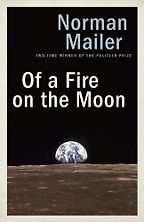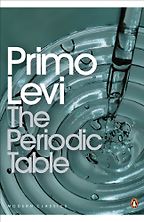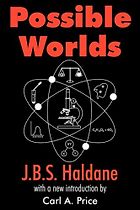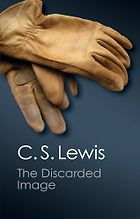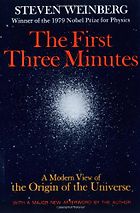You’ve been reviewing books of all genres, not just science, for many decades now. What do you look for in science writing? Is what makes a good science book any different from what makes a good any-kind-of book?
No. It begins with the writing. Good writing is not that easy to define, but it’s stuff you want to read. That’s a tautological definition, but also the best definition that I know. If it’s stuff you want to read then it will be well written. I always say I like non-fiction because I can relate it to the world around me. That’s what I thoroughly enjoy about science: it explains the world I’m living in and it doesn’t just explain it scientifically. It can explain it in literary terms as well.
Are there any particular challenges when it comes to writing about science? Is it harder to write a good book about science?
I will now embark on my lecture on how hard it is to write about science. If you have a discipline like biology which, according to Robert Burchfield [a former editor of the Oxford English Dictionary], in 1990, had added 60,000 words to the English language—that’s before the human genome project added another 60,000—you’d say that’s quite a lot. That’s a big lexicon. It’s actually twice the number of words that Shakespeare needed to write the entire Avon catalogue.
“Science explains the world I’m living in and it doesn’t just explain it scientifically, it can explain it in literary terms as well.”
You also have the strange phenomenon that not only are the words in science quite hard but the ideas are pretty heavy as well. Let’s forget about quantum mechanics: almost everything in science is counterintuitive or unexpected or unimaginable. Who can imagine a cell? Who can imagine a trillion cells, which is what we are? I can’t even imagine a trillion and yet we’re dealing with these colossal numbers and impossible sizes and scales. Everything about science is hard except the words. The words have to be the same as those you would use if you were talking to someone. And that sets up a challenge. People will occasionally condemn the use of metaphors in science, and my answer is, ‘Yes, but try and write without them.’ You won’t get very far. What you’re doing is describing the world and you’re telling people things that they don’t even know they want to know.
But they do want to know them, because there are three terrific stories in science. One is where the universe came from. The other is where life came from. The third is where we came from. All the science that you actually want to know is embraced by those three things. Most people don’t want to know how a smart phone works. They want to know what it can do but they don’t want to know how it works because that’s just too boring for words. But how life was formed and where it came from, and why it is like it is, is utterly fascinating and so, of course, is the human story. Your own interest in Egyptology, for instance, or ancient Greece, is part of this whole narrative. It’s all to do with origins. Funnily enough, everything I’ve just told you is already in the book of Genesis, which we all know even if we don’t believe in it. That and the book of Job are lovely expressions of all the questions that science has been dealing with.
Let’s take your first book which is Possible Worlds — a collection of essays by J.B.S. Haldane (1927).
This book contains within it the essay that turns up in every science writing anthology, “On Being the Right Size.” All science books get overtaken. You don’t normally read a science book twice — because it’s going to be out of date a year-and-a-half from now. It’s going to be comprehensively out of date in 10 years, and after 20 years you’re going to wonder why you ever trusted it in the first place.
Get the weekly Five Books newsletter
But, strangely enough, these essays work. The ones that don’t work as science now work as a nice little picture of what people thought in 1920. It’s very well written and I’m immensely fond of it because Haldane was a man of great generosity. He was as happy, if not happier, to write for the Daily Worker as he was for the Guardian. All of these pieces of journalism are models of how to explain things to people without using long and arrogant words.
You get a real sense that he was passionate about trying to communicate those ideas to everybody.
He certainly was. You also get the sense that he looked for the unexpected. There’s a lovely description of being sick and then eating cheese. The cheese that he chooses to eat was a blue cheese, in a state of great bacterial decay. He describes all of that with great glee. What he’s doing there is approaching things through the sensual and the nowness of everything. Everything he starts with concerns things you can imagine. Then he goes on to the things that you can’t imagine, where you need his help.
There’s a nice clarity, isn’t there? In “On Being the Right Size,” for example, he says that higher animals are not bigger because they’re more complicated but they’re more complicated because they’re bigger. He sums up the whole thing in this one sentence.
That’s what we should be doing, as journalists. We should be summing things up in one sentence if we possibly can. That’s a clear soundbite. A soundbite is a memorable sentence and there’s no point in having an unmemorable sentence. There’s a greater density of memorable sentences in Haldane’s collected journalism than there is in most great novelists’ writing. That’s a very strange trick to pull off. The same, however, is true for another book we’ll talk about.
Let’s move on to Normal Mailer’s Of a Fire on the Moon (1970). This is from three pieces he wrote for Life magazine on the Apollo moon programmes. Tell me a bit about that.
Mailer actually graduated from Harvard as an aeronautical engineer, was drafted into the army, and came back a novelist. It’s no surprise that when he writes about the hardware of Apollo, he writes not just exceptionally well but better than anybody I’ve yet to read. Those of us who were around and sentient journalists from 1961 to 1969 followed this story like there was nothing else on earth. The Vietnam War was going on and we did pay attention to that too. But mostly we were fixated on the American end of the Apollo programme and wistfully angry because we couldn’t find out more about the Russian end. It’s no surprise that Life magazine commissioned Mailer to do it. Esquire magazine had already gotten him to do two or three pieces which are among the best journalism I have ever read. Of a Fire on the Moon is not a book that’s likely to stay in print indefinitely because great chunks of it are self-indulgent rubbish. Whenever I pick it up—and I do so every year or two—I read his account of being a witness to the launch of Apollo and it is prose that brings tears to my eyes. I cannot tell you how good it is. There’s no substitute for picking the chapter up and reading it yourself. And it’s strangely uneconomical. With Haldane you feel he has said as little as he possibly can and packed meaning into it with wonderful clarity. Mailer has done the same by picking the words up and throwing them at you as if you were a wall. But they stick.
And the attention to detail when he’s talking about the rocket launching…
Yes, there’s that wonderful passage about what it takes to actually make a rocket leave the ground: how you have to claw it down and hold it there before it can actually take off. All of that is terrific. And it puts into a strange perspective the odd dismissive tone he has for what you might call the ‘NASA engineer’ sort. At the time, none of us wanted to be NASA engineers. We thought that they were rather boring. But we couldn’t help revelling in their achievements. The idea that you could get 24,000 people to cooperate in getting a rocket off the ground and to the moon and back seemed to be an exercise is national self-indulgence but, of course, it was a great thing to do. It’s a cliché but we understand the world differently because we’ve left and looked back at it. Of a Fire on the Moon is still my favourite book about that great adventure.
Your next book is Primo Levi’s The Periodic Table (1975). This must be on pretty much every list of top science books. The Royal Institution calls it, “the best science book ever.” What is so great about this book?
It was a personal discovery of mine. It came into the Guardian books department of which I was not then the editor. I picked it up—I’d read about it in the New York Review of Books—and I said to the literary editor, ‘You’ve got to review this one.’ He said, ‘Oh do you think so, old boy?’ Or something like that. Later, he came to me and asked if I could review it. He said there was only one page for the six or seven thousand books a year that turn up at the Guardian. Most papers then only reviewed about 600 books in the course of a year. So it was quite difficult to make sure that this one would run. I had already read it by the time he came to me and I just jumped on it. I’m only sorry now that I didn’t say what I thought at the time, which is that this is a book that we’ll all be reading in 100 years. You tend to be a little guarded and I simply described the book as ‘gold’ all the way through — or some such remark.
Can you say a bit about the book for people who have not read it?
It’s a life story by a chemist seen through the prism of an elemental substance. Some of it doesn’t work very well and some of it works very well. There’s a lovely chapter on iron that refers to the arrival of the Fascist era. There’s a much more personal account involving mine tailings and the extraction of precious metals from mine tailing, which he was employed at. That gives him a chance to contemplate the nature of matter itself and why the stuff that’s in the ground is the same as the stuff that actually composes our bodies. And why things that happen in chemistry can be subtly different if you alter the element that’s involved in the process. All of it is illuminating. You read it and you understand the world around you much better for having read even a sentence of Levi. You just think, ‘God, I hadn’t thought of that before and isn’t this so beautifully put?’ But you don’t spend a lot of time doing that whilst you’re reading the book because I don’t know of another writer who can make the things that are important to us as important as they should be but he does. And then, of course, it’s not just an account of being a chemist in troubled times: he was an actor in one of the great dramas of the twentieth century, one that affected all of our lives. I was born in 1940 so by the time the war was over, I knew there had been a war. The photographs of Belsen and the other camp survivors had already started appearing in the papers. The world was full of refugees and people who were lost. Levi’s account is central to that. He, once again, uses the idea of a chemical element to tell the story of how he survived in a concentration camp and, later on, he tells a story—a little more slippery—of the identification of his Auschwitz slave master from the characteristic misspelling of an element in a consignment of goods. This too is a book that I refer to again and again and not just because he signed it for me!
So, with this book as well as Mailer’s, they’re quite literary. It’s all about meaning and metaphor and they’re very personal. That’s the opposite of what we often think of as good science writing. You think you have to be factual, unambiguous, clear, and objective.
Yes, I know that that is what people want but whenever I write for anybody, all I want is for the reader to read it. I don’t care what it is that makes him or her read it but I do want them to read it. And any literary trick, imagery, bit of poetry, bit of hooptedoodle—as John Steinbeck called it—anything you can use to keep the reader reading is legitimate. In the case of Mailer and Levi, they know what they’re doing and they’re doing it in a very accomplished way. Even when they’re doing it badly, Mailer is doing it well. But the notion of a formula for science writing is one we should discard. It’s about understanding the world, it’s not about understanding science. Science is just a tool for unlocking some of the mysteries and puzzles that we’re all privy to. We’ve got a fine example of it in the clarity of Haldane, who I’m fond of quoting as the man who once said that, “The universe is not only queerer than we suppose, it is queerer than we can suppose.” Although that’s simple and clear and unmistakable, it also seems, to me, to be quite profound and an idea that can take you in any direction.
Your next book is by C.S. Lewis: The Discarded Image (1964).
This is shameless conceit. It was the first book I reviewed in England. I was born in New Zealand, and I did review a book in 1958. But when I came to England, I had imagined that my career as a book reviewer was over. Then, suddenly, I received a message from a man who claimed to be a literary editor and asked whether I would like to review some books. I said yes. This one was on the desk, so I grabbed it. Everyone who saw out the 1950s already knew C.S. Lewis because he was the author of a little science fiction trilogy, The Space Trilogy, which everyone loved. He was also the author of a set of moralising essays of great wit called The Screwtape Letters which were the letters of a senior devil to a junior devil, passing on advice about how to corrupt a soul. In the 1950s everyone went to church on Sunday and to benediction on Sunday evening, and turned up at Easter and Christmas. Whether they believed in it or not, they just did it. The idea of religion was not anathema to anyone who was interested in science. Lewis’s book, however, is a different story. What he does in The Discarded Image is to use the elements that the medieval philosophers used to create a world that was, essentially, Aristotelian and pre-Copernican. They had created a lovely world that worked intellectually, morally, theologically and imaginatively in all sorts of extraordinary ways. This world, as we know when we read our science history, was surrendered with reluctance. There are still people who use the language of that medieval world: we still talk, unashamedly, about the four corners of the earth. That, however, is a reminder of a vanished image — or a discarded one. The brilliant thing about C.S. Lewis is that he is able to describe this world entirely in terms of the authors that contributed to it. He even analyses why the medievalists believed there was a coarse common-or-garden world, an ethereal world of demons, and a higher one full of purer beings.
So he’s not judging it by today’s standards?
No, he’s not judging it. He doesn’t care. He’s just interested in the components with which it is put together. Of course, you have to understand this world or you can’t enjoy Dante and you can’t really enjoy the book of Job. There’s a reason for looking at this. He has given us a cosmology that preceded—that made sense for the citizens of the world that preceded—Copernicus and worked beautifully for them. And still, in its strange way, it works beautifully for us.
Can science writers learn from this book now?
Anyone can learn from reading C.S. Lewis because you’re learning how to marshal an intellectual idea. He did this with almost every book he wrote. Some of them are more difficult than others. I would recommend this book to a science writer but I would recommend, also, An Experiment in Criticism, which is the simplest possible explanation of what it is we’re doing when we read. There are people who read books and there are people who re-read books. The first will discard a book because they’ve read it before. But people who really love books will pick a book up because they’ve read it. They’ll expect to read it again and again because each time, you learn something from it. This is a book from which you can learn every time you open it.
With your last book, we go right back to the beginning of the universe. It’s The First Three Minutes by the Nobel Prize winning physicist Steven Weinberg. Why did you choose this one?
Not only is it the beginning of the universe, it’s the beginning of books about the universe — as far as I’m concerned. Until 1965, there was no evidence whatsoever that the universe had a beginning. The Penzias and Wilson findings begin there and it took another decade or so before anyone actually said ‘Yes, you were right.’ So, when Weinberg wrote The First Three Minutes, he was, essentially, the first popular science writer to take the subject up and run with it. He did it in a way that ought to appeal to every journalist’s heart. First of all, he’s got the title The First Three Minutes. You can’t beat it. I always say that the best books tell you in a sentence all you need to know about them — like Gibbon’s Decline and Fall of the Roman Empire. It’s not about the rise of the Roman Republic. In the case of Crime and Punishment you get the crime and you get the punishment. In the case of The First Three Minutes, that’s also what you get. It’s a book that confines itself almost in its entirety to what happened sometime during the first second and it more or less stops at two minutes fifty-nine. After that, he says, nothing else interesting happened for the next 430,000 years. It’s full of wonderful lines like that.
“Einstein remarked that the most incomprehensible thing about the universe was that it was comprehensible.”
It instantly became a bestseller and that is quite a rare thing. There’s always a reason why a book becomes an instant bestseller. In the case of Weinberg, it became a Fontana Modern Classic because it sold a lot. You saw people reading it. And when you read it, you worked out why. It was an example of clarity and focus and sympathy for the unaware. He handles the timing of immense events happening inside a space so short that we can’t really imagine it at all and yet we can and we have and he’s imagined it beautifully. Like Haldane, he has a gift for saying things that you don’t forget. Einstein remarked that the most incomprehensible thing about the universe was that it was comprehensible. Weinberg tops that by saying, very near the end, that the more the universe seems comprehensible, the more it seems pointless — which, again, is a line that you don’t forget. And to have written a line that you don’t forget is, in itself, an achievement that very few of us are going to be able to record.
He had a line I liked, something along the lines of how he couldn’t deny a sense of unreality in writing about the first three minutes as if we know what we’re talking about. He writes very clearly but, at the same time, there’s this acknowledgement that the understanding might change. It’s not dogma.
All of his books are distinguished by a preparedness to be wrong. In two of his books he observes that we might just be too stupid to understand what’s going on, in the sense that you can’t expect a dog to understand chemistry.
Going back to Haldane, “queerer than we can suppose”.
Yes, queerer than we can suppose. I suppose, in a way, we’ve described an arc with these books and I didn’t know that when I chose them. There is a logic to the succession of them.
One thing I noticed, though, is that the most recent book you chose was published in 1977.
There was a mix of reasons for that. I could have chosen any one of at least three books by Richard Dawkins and at least three books by Richard Fortey. Then there is Edward O. Wilson for whom I have an unequivocal admiration. Lawrence Krauss is no mean thing. I’ve known Paul Davies for years and I think his stuff is terrific. In the end, I decided that I would sit on all of the ones who are still alive, except for Steven Weinberg. All the others are dead. The reason I’m happy to talk about the Weinberg is because even before preparing for this interview I’d already read it three times. The most recent was only a couple of years ago. I chose to re-review it because I enjoyed it so much. That tells you something about a book. Books that endure have a value that ephemeral books cannot ever match.
So you wanted books that have stood the test of time?
Yes, I wanted books that I wouldn’t wish to be without. That’s a very large group, by the way, and is immensely catholic.
Are there any brilliant female science writers? Or is it that there weren’t enough women writing about science decades in the past?
There are brilliant women scientists and there are brilliant women science writers like Lisa Randall. Weinberg had the advantage because he was the first. In that sense, Homer had the advantage because he was the first. We’re always going to read Homer. In the case of Weinberg, once he’d written The First Three Minutes he’d set a standard for everyone else that follows.
Five Books aims to keep its book recommendations and interviews up to date. If you are the interviewee and would like to update your choice of books (or even just what you say about them) please email us at [email protected]
Five Books interviews are expensive to produce. If you've enjoyed this interview, please support us by donating a small amount.

